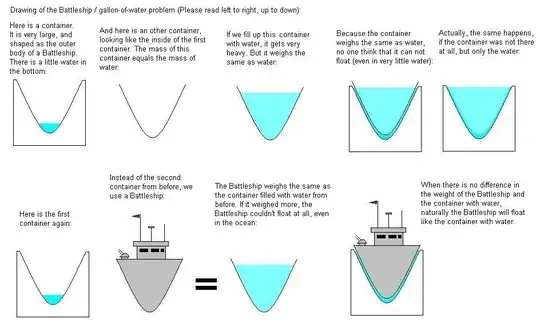Given a battleship, suppose we construct a tub with exactly the same shape as the hull of the battleship, but 3 cm larger. We fill the tub with just enough water to equal the volume of space between the hull and the tub. Now, we very carefully lower the battleship into the tub.
Does the battleship float in the tub?
I tried it with two large glass bowls, and the inner bowl seemed to float. But if the battleship floats, doesn't this contradict what we learned in school? Archimedes' principle says "Any floating object displaces its own weight of fluid." Surely the battleship weighs far more than the small amount of water that it would displace in the tub.
Note: I originally specified the tub to be just 1 mm larger in every direction, but I figured you would probably tell me when a layer of fluid becomes so thin, buoyancy is overtaken by surface tension, cohesion, adhesion, hydroplaning, or whatever. I wanted this to be a question about buoyancy alone.
